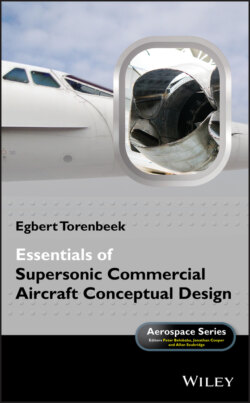Читать книгу Essentials of Supersonic Commercial Aircraft Conceptual Design - Egbert Torenbeek - Страница 8
Preface
ОглавлениеThis book is intended to be used by members of a team producing an initial design concept of an airliner with the capability of making supersonic cruising flights. Since the demise of the Concorde more than half a century ago there are no designers left with the experience and knowledge required for developing a new initial design proposal. On the other hand, since Concorde's birth there has been a wealth of scientific publications on topics, such as the development of supersonic cruise vehicles, aerodynamics, propulsion, structural design, and flight physics, and in particular the analysis of the sonic boom. Moreover, there appears to be a considerable niche market for relatively small high‐speed aircraft, in particular business jets.
The development of supersonic technology since the end of the twentieth century has primarily advanced in the field of transonic and supersonic aerodynamics. For example, many studies have been carried out in the field of configurations with oblique wings, promising improvements in flight efficiency of up to 20% as well as large gains in reducing the sonic boom, take‐off noise, and low‐speed performance improvements. From this point of view, a new generation of supersonic passenger aircraft could have a commercial future a decade from now.
Although the present generation of aircraft designers has enjoyed an introduction to the physics of supersonic flows during their academic education, not many of them have actually experienced activities associated with the design of a supersonic cruise vehicle. Fortunately, a wealth of high‐quality information on applied supersonic aerodynamics is available in classical books such as the well known books of D. Küchemann, J.D. Anderson and D.L. Raymer. Together these texts provide a comprehensive introduction into the fundamentals, and analytical and computational treatment of high‐speed flows.
